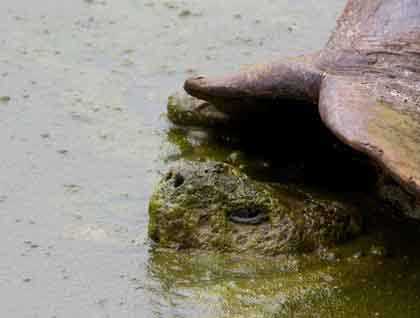Galapagos means “saddle.” When the Spanish discovered the islands in the 1500s they had encounters in the wild with the giant tortoises. Their shells made them think about a kind of saddle called galapago.
These reptiles have different shells depending on the islands where they are from. On islands with altitude, therefore more vegetation, they have what we call a “dome shell.” On dry islands tortoises have what the Spanish called “the saddle back” or “galapagos.” The islands are named after this unique and iconic animal: the giant tortoise.
During whaling times thousands of these animals where used as a food source, shrinking down the population to extinction on some islands. When the conservation efforts started in the 1960s some islands were in big danger of losing the dynasty of the tortoises.
Today we had our chance to see tortoises in the wild and to learn about the breeding program that the Galapagos National Park and the Charles Darwin Research Station have been working on during the last decades.
We started our day in Academy Bay, on the south side of Santa Cruz Island. First we had time to learn about the tortoise and iguanas breeding center and the many other programs that are run to ensure the protection and conservation of the islands, and then we had time to relax and do some shopping in the town of Puerto Ayora. Then it was time to visit a completely new ecosystem for us: the highlands!
We took buses to go to the area where tortoises wander. The altitude of the islands stops the moisture that is blown with the wind. This fact brings water to the islands and offers an ecosystem for more plants to grow. It’s amazing to see the change from the dry zone of vegetation to the humid zone! First we visited a farm to learn about how people lived on the islands before we had much development. Then we explored the humid zone of vegetation and we found several huge Galapagos tortoises. We enjoyed the time with these amazing animals and had time to get some of our best shots! And finally we could see how Galapagueños live in these islands by visiting town again! What a day we had! We closed our long day with local musicians coming to perform for us! A great end for a great day!







